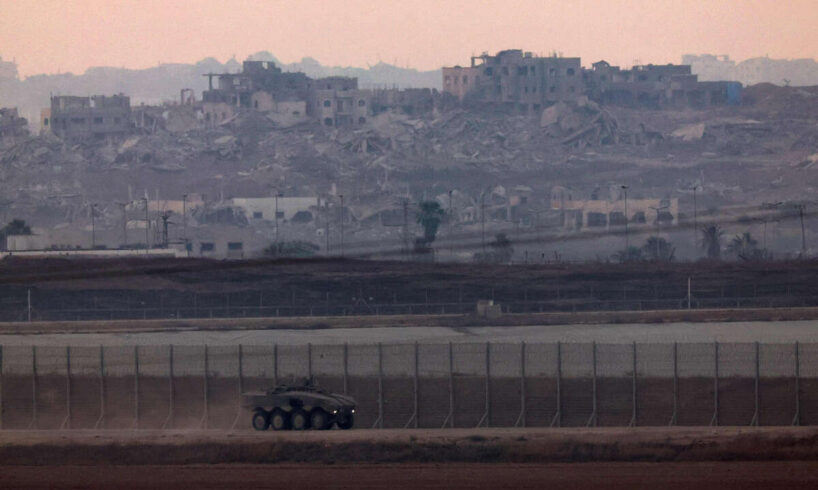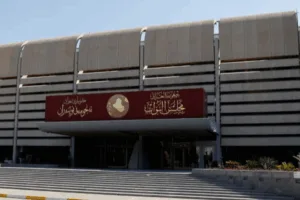
Despite intense American pressure and the Israeli leadership’s strong desire to reach agreements on a partial hostage deal, Israel finds itself waiting, yet again, for Hamas’ response. In the meantime, IDF forces have entered ground operations in a region where they have not previously operated – Deir al-Balah.
Israeli sources indicate that Israel has demonstrated flexibility toward Hamas on multiple issues, including territorial maps and prisoner release protocols, yet Hamas continues creating obstacles and, paradoxically, is exploiting Israeli flexibility to pursue additional concessions.
For its part, the IDF has accomplished the objectives established before Operation Swords of Iron and now maintains control over 75% of the Strip’s territory. Following recent announcements by the IDF Arabic spokesperson instructing Deir al-Balah residents in the central Strip to evacuate their homes, ground operations by military forces in the area were confirmed yesterday. Should the hostage deal proceed, the IDF will operate according to political leadership directives regarding partial withdrawal from the Strip during the 60-day ceasefire period. However, the crucial question now concerns the operational alternatives available to both the IDF and political leadership regarding continued Gaza Strip activities, should a hostage deal fail to materialize or should fighting resume following ceasefire expiration.
Conquering Gaza
The first alternative, carrying very low probability, involves a political leadership decision to conquer Gaza Strip’s remaining territory. Such an approach would address Hamas strongholds that the IDF has not tackled throughout the entire conflict and advance toward the objective of Hamas’ defeat. A significant disadvantage involves potential harm to Israeli hostages, who intelligence assessments suggest are located in areas where the IDF has avoided maneuvering, considering that such operations might jeopardize their lives. The probability that decision-makers would approve actions potentially endangering hostage lives remains minimal. An additional major drawback involves the substantial force requirements, with potential combat casualties, while regular and reserve fighters are already exhausted and IDF leadership actively seeks to reduce their operational burden.
A second alternative, carrying higher probability, involves continuing to maintain Operation Swords of Iron achievements, meaning avoiding Gaza Strip operational expansion while continuing territorial clearing and ground combat against Hamas in current army positions, with possibilities for limited operational expansion. This approach’s advantage lies in areas where the IDF already maintains presence and control, allowing for partial force reduction and providing soldiers some respite. The major disadvantage involves the relatively static nature of forces, potentially creating vulnerability for Israeli casualties – both from Hamas’ guerrilla warfare that continues intensifying recently and from operational accidents that unfortunately are increasing, possibly due to force attrition. While this plan might gradually weaken Hamas, attrition would continue incrementally, leaving the terror organization with resistance pockets in central camps and areas where the IDF has not yet operated. Hostage recovery under this scenario would also face delays unless Hamas agrees to ceasefire terms.
Illumination flares launched by the Israeli army are seen over Deir al-Balah in central Gaza Strip Monday, July 21, 2025 (AP/Abdel Kareem Hana)
Humanitarian city
Under both alternatives, the coalition would likely advance its plan establishing a “humanitarian city” south of the Netzarim Corridor, attempting to relocate hundreds of thousands of Palestinians from throughout the Strip. Finance Minister Bezalel Smotrich advances this plan with Prime Minister Netanyahu’s support. As Israel Hayom revealed Monday , Netanyahu maintains commitment to this plan despite military opposition and the chief of staff’s assessment in closed discussions that it represents a “strategic mistake” and even a “strategic trap.”
As our investigation revealed, Netanyahu prevented the Diplomatic-Security Cabinet from discussing the third option – the new plan developed by Chief of Staff Lt. Gen. Eyal Zamir. Lt. Gen. Zamir presented his plan exclusively to the Diplomatic-Security Cabinet, specifically the faction leaders’ forum, but Netanyahu blocked plan discussion following its presentation and prevented the chief of staff from presenting it again to the expanded cabinet. This plan could be implemented immediately if hostage deal negotiations collapse, or following the 60-day ceasefire period if the deal proceeds but no progress occurs toward subsequent deal phases releasing remaining hostages.
“Hamas will be in a predicament”
Contrary to various reports, the IDF chief of staff’s new plan excludes full Strip conquest or control assumption, instead broadly encompassing siege operations covering most controlling territories, including all Strip entrances and exits, while systematically weakening Hamas, clearing operations, preventing organizational strengthening, maintaining fire operations for raids, and reducing soldier attrition. Currently, additional details regarding Lt. Gen. Zamir’s plan remain classified, but during his Gaza Strip visit two days ago, the chief of staff addressed fighters with hints about future operations. “We will implement new operational formations maximizing our advantages, reducing vulnerabilities and deepening operational achievements. These measures will place Hamas under increasing distress while reducing force attrition. We have presented options to the political leadership and will establish reality according to our interests,” Zamir explained.
The fourth option involves achieving a hostage deal within coming days, requiring withdrawal lines and military conduct according to political leadership agreements reached through negotiation frameworks. Regardless, all these alternatives, along with various modifications, remain under consideration, with final decisions resting with the political leadership.





